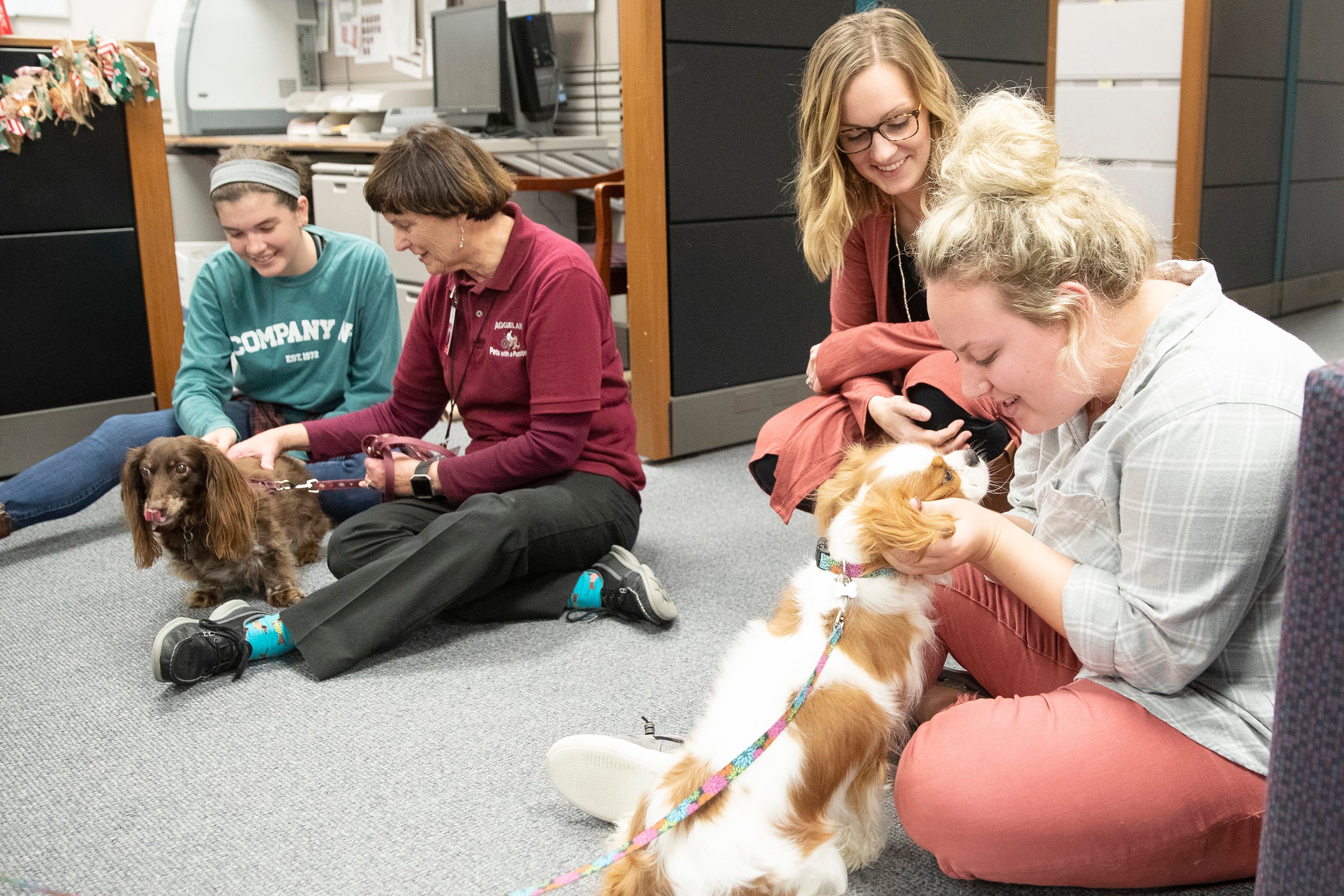Pet Talk: The Magic of Pet Therapy
Published 8:00 am Sunday, August 4, 2019
Does your pet have a talent for comforting those in need? Volunteering for pet therapy is a great way to spend more time with your pet, while also improving the lives of people in your community.
Kit Darling, an infection control coordinator at the Texas A&M College of Veterinary Medicine & Biomedical Sciences, says pet therapy can have a multitude of benefits for many different types of people.
As president of Aggieland Pets with a Purpose, a pet therapy organization in the Bryan/College Station area, Darling has personally seen the positive impacts that therapy animals, including her own dogs, can have on people in need.
“Animals have a non-judgmental nature,” Darling said. “It does not matter what you look like or if you are happy or sad, they can provide joy and comfort for you.”
Pet therapy is often used to help people in hospitals or long-term care facilities, including assisted living, rehabilitation centers, and skilled nursing facilities. Therapy animals can also comfort people with special needs, such as autism, Down syndrome, depression, post-traumatic stress disorder, or brain injuries.
“Therapy animals can lower blood pressure, relieve stress and anxiety, decrease loneliness, increase activity, improve communication, and enhance social opportunities,” Darling said.
By brushing, playing with, and talking to animals, patients in physical, occupational, or speech therapy can become more motivated to complete therapy activities.
In schools, therapy animals can provide a source of stress-relief before exams and even encourage kids to speak and read more in the classroom.
“Children can read out loud to the animal and it will not judge, criticize, or laugh if the child does not pronounce a word correctly,” Darling explained. “The animal can help the child improve their self-confidence, self-esteem, and social skills.”
Pets that are friendly, calm around people and animals, and well-trained may make good therapy animals. To get involved in pet therapy, Darling recommends searching for local groups and seeing what requirements they have.
Although every organization may have slightly different requirements, the Canine Good Citizen test can be a good starting point for training therapy dogs. This test determines how a dog reacts to loud noises, meeting new people or animals, and being touched or tugged on, as well as how it does with leash walking and basic commands like “sit” and “stay.”
Besides local organizations, larger groups like Therapy Dogs International and Pet Partners can also help with certifying an animal for therapy work and finding a place to volunteer.
If you have the desire to make a difference in your community, look into volunteering for pet therapy with your dog, cat, or other animals. Even little things like hugging a dog or hearing a cat purr can make a big difference for someone who needs to experience the unconditional love of pets.
Pet Talk is a service of the College of Veterinary Medicine & Biomedical Sciences, Texas A&M University. Stories can be viewed on the web at vetmed.tamu.edu/news/pet-talk. Suggestions for future topics may be directed to editor@cvm.tamu.edu.






